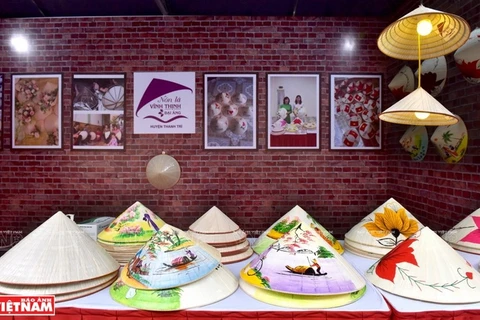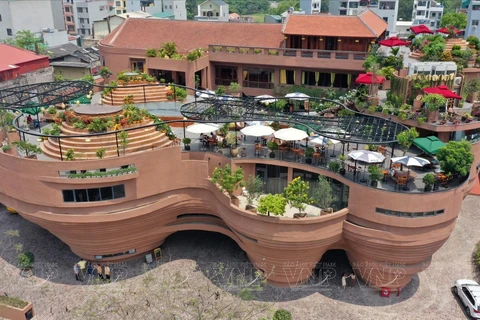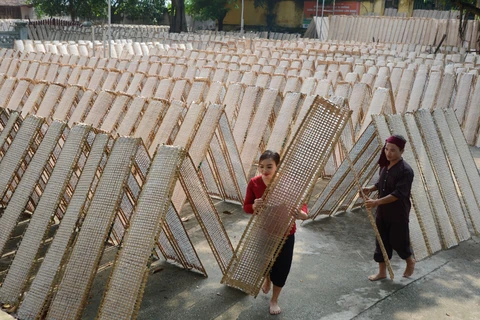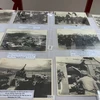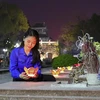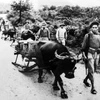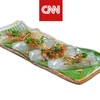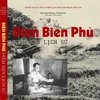Hanoi (VNA) - Not only a way of living, the craft of making tofu skin, which has existed for nearly a century in the Mekong Delta province of Vinh Long, has also become a unique cultural value of the local people.
Made from soybeans, tofu skin, called ‘tau hu ky’ in Vietnamese, is also known as bean curd skin or bean curd sheet. During the process of boiling soybeans, a film or skin composed primarily of a soy protein-lipid complex forms on the liquid surface. This thin layer is carefully removed and dried to become tau hu ky.
Residents of My Hoa commune, Binh Minh town, said that the craft was introduced by the Chinese when they came to settle and start their businesses in My Hoa, and that the local products are renowned for their distinct quality and delicious taste.
In last August, the craft of making tau hu ky in My Hoa commune was officially recognised as a national intangible cultural heritage by the Ministry of Culture, Sports, and Tourism, under the category of traditional handicraft.
Culinary and Experiential Tourism Destination
The tofu-skin craft village in My Hoa commune is located about 30 km from the centre of Vinh Long City and less than 10 km from the center of Can Tho City, making it easily accessible for tourists, who want to visit and experience the production process.
Currently, there are over 50 households engaged in tau hu ky production, with nearly 200 regular workers, of which 29 households have formed cooperatives for production.
To make the product, soybeans are soaked for about 2 hours until they swell and soften, then ground into powder and placed in a centrifuge machine to extract water. The pure soy milk is then poured into a pan and boiled to form the bean curd skin.
The only ingredient used in making the delicious product is soybeans. On average, about 2.4 kg of fresh soybeans are needed to produce 1 kg of tofu skin.
Nguyen Thi Thuy Phuong, a maker at the Thanh Dat production facility, mentioned that each batch of bean curd skin takes about 18-20 hours to be completed. The craftsmen must continuously monitor the fire, carefully cut the sheets in the right direction, ensuring that the final products are beautiful and not torn.
Vitality of century-old craft village
For nearly 100 years and through many ups and downs, the craft village has continued to thrive. It is the main livelihood of the local people, sustained and developed by passing it on to the next generations.
In My Hoa, there are many families with up to three generations engaged in this craft. In the past, when straw-fired kilns were used, each family cooked a few pans of soybeans to produce dozens of kilograms of tofu skin per day. Nowadays, with the support of machinery and equipment, a household can cook around 100-200 pans of soybeans daily, providing over 120 kilograms to the market.
The local product, initially sold only in Vinh Long, has expanded its market to other provinces in the Mekong Delta and across the country. On average, the craft village supplies more than 5 tonnes of the product in various forms per day. During special occasions like full moon days and Tet holidays, the production doubles./.

